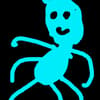Strangler Fig Pattern Introduction PDF
Document Details

Uploaded by DecisiveGreatWallOfChina1467
Tags
Related
- TUP_4C_LCIV_TEO_U1_Microservicios.pdf
- Application Development (DICT312) Test 1 - August 2024 PDF
- Deciding Whether a Feature for a Social Polling App Should Be a Microservice PDF
- Microservices Architecture and Apps for Libraries PDF
- Enterprise Study PDF
- Microservices & Monolithic Architecture Recap PDF
Summary
This document provides an introduction to the Strangler Fig Pattern, a software development approach for transitioning from monolithic to microservices architectures. The pattern facilitates a gradual replacement of legacy system components with new microservices, minimizing risk and disruption during the process.
Full Transcript
! 200 Introduction ** What is Strangler Fig Pattern? ** It is an approach used in software development * when transitioning from a * ** monolithic architecture ** to a ** microservices architecture. ** The pattern is named after the strangler fig tree,...
! 200 Introduction ** What is Strangler Fig Pattern? ** It is an approach used in software development * when transitioning from a * ** monolithic architecture ** to a ** microservices architecture. ** The pattern is named after the strangler fig tree, which ** gradually grows around and ** ** eventually replaces existing trees. ** In the context of software engineering, it refers to the ** gradual process of replacing parts of a legacy system ** with ** new applications and ** ** services. ** ** Strangler Fig Tree ** Imagine an ** ancient, humongous tree in a dense forest. ** This tree represents your ** old legacy system. ** One day, a new plant, the ** Strangler Fig, starts growing at the base of this tree. ** Over time, the fig grows, wrapping itself around the ancient tree. As it expands, it ** replaces more and more parts of the original tree ** until the ** old tree is ** ** entirely enveloped and ** ** replaced by the Strangler Fig. ** This ** tree is a ** ** metaphor for ** ** legacy systems. These systems, often ** ** outdated yet ** ** deeply integrated, support ** ** critical business operations. ** They're like the old tree - rooted deeply within the organization's architecture, its many ** branches representing the ** ** various functions it supports. ** And replacing these systems can be just as ** daunting as replacing the old tree. ** So how can we replace such ** deeply rooted legacy systems? ** There is a ** solution that allows you to ** ** gradually replace parts of the ** legacy system without causing ~~ business disruption. ~~ That solution is the ** Strangler Fig Pattern. ** It's named after the Strangler Fig, a tree that grows by gradually enveloping other trees, eventually replacing them. ** What's It All About? ** The Strangler Fig Pattern in ** software design ** mimics the process of gradually replacing the legacy system. Instead of replacing a large, old system (the ancient tree) ~~ all at once, ~~ you build ** new parts (the Strangler Fig) ** ** alongside it. ** ** Gradually, the ** ** new system ** takes over ** functionalities from the old system ** until the old one can be ** safely retired. ** Why Use the Strangler Fig Pattern? With rapid technological advancement, ** ** organizations need to keep up with the latest technology ** ** to stay competitive. However, ~~ completely overhauling a legacy system can be ~~ risky and disruptive. Here's where the Strangler Pattern shines - it allows for the ** gradual replacement of a system, ** ** mitigating risk and ** ** minimizing disruption. ** 1. ** Less Risky: ** You're not ripping out the old system in one go. So there's a ~~ ~~ ** safety net. ** 2. ** Flexibility: ** You can ** prioritize which ** ** parts to replace based on ** ** urgency or ** ** business needs. ** 3. ** No Big Bang Releases: ** ** Continuous delivery and ** ** gradual replacement ** mean less potential for ~~ massive failures. ~~ 4. ** Smooth Transition: ** ** Users ** might not even notice the shift as it's ** gradual. **